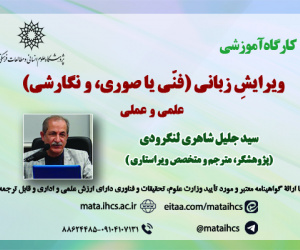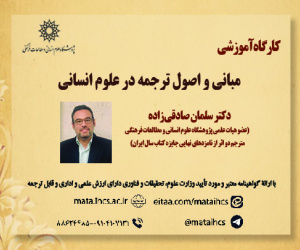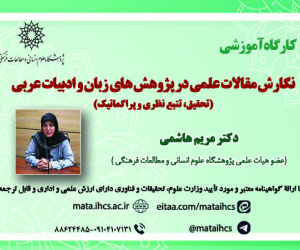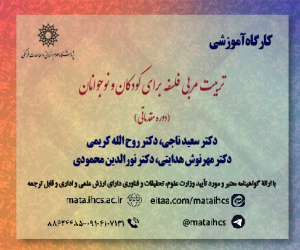فرم و نشانه: مجاورت و برهمنهش واحدهای نشانه شناسانه زمانی در قطعه کادو اثر فرانکو دُناتُنی (مقاله علمی وزارت علوم)
درجه علمی: نشریه علمی (وزارت علوم)
آرشیو
چکیده
هدف این مقاله بررسی شالوده فرم موسیقایی از منظر حرکت و نیرو و تحلیل فرمال قطعه کادو، اثر فرانکو دناتنی با نوعی روش نشانه شناسانه است. ابتدا ماهیت نشانه موسیقایی مورد واکاوی قرار گرفته و مفهوم تداعی حرکت و نیرو (سینتیک) در موسیقی به عنوان نوعی نشانه در مثلث نشانه گان چارلز سَندرز پیرس بررسی می شود. مطابق روش نشانه شناسی پیرس، عناصری در موسیقی که تداعی حرکت و نیرو می کنند می توانند به نوعی معنادار تلقی شوند. در ادامه، ۱۹ واحد زمانیِ نمایه ای (تی–اس-یو) که توسط دلالند و همکارانش تدوین شده است، مبنای تحلیل فرمِ قطعه کادو قرار گرفته که آن را تحلیل سینتیکی نامیده ایم. این مقاله نشان می دهد که دناتنی با تکنیک برهمنهش به معنای همزمانی عمودی و مجاورت به معنای کنار هم گذاردن افقی، سه تی-اس-یوی زمان نامحدود «سنگینی»، «قصد شروع» و «وسواسگونه» را به عنوان مضامین اصلی حرکتی در فرم اثر خود القا می کند. آهنگساز بر اساس تفکر ریزومی، با مجاورت و برهمنهش این سه الگوواره، نوعی فرم غیر خطی می آفریند. همچنین لزوم کاربرد نشانه های سینتیکی به عنوان ابزاری در تحلیل فرمال آثار موسیقایی تبیین و در نهایت وجه تمایز مفهوم تکرار در موسیقی دناتنی از منظر پدیدارشناسانه تدقیق شده است.Form and Semiotics: Juxtaposition and Superimposition of Temporal Semiotic Units in Franco Donatoni’s Cadeau
This article examines the foundation of musical form from the perspective of motion and force in Franco Donatoni’s Cadeau, using a semiotic approach. We start by exploring the essence of musical signs, with a focus on the intricate examination of motion and force, commonly referred to as kinetics, as a distinct sign category nestled within the profound framework of Peirce’s sign triad. Also, we review the concept of visuality in music, as well as the fundamental roots of this concept using Peirce’s semiotic system. Visual signs are metaphorical representations of musical entities that vary in the mind of each interpreter. However, these metaphors share a common foundation, which is the type of motion and force within them. Due to the temporal nature of music and the existence of the dual tension and release, which is synonymous with the concept of energy, music can be associated not only with imagery but also with deeper layers of motion and force. With focusing on Donatoni’s Cadeau, this article demonstrates that musical signs are of an indexical nature and require interpretation to be meaningful, requiring a specific type of listening behavior. This type of listening is referred to as Figurativization. Delalande findings are in coordination with Peirce’s semiotic law of the triadic relationship and thus elements in music that embody motion and force can be interpreted as meaningful. Subsequently, the 19 temporal units called TSU (Temporal Semiotic Units), developed by Delalande et al., are employed as the basis for analyzing the form of Cadeau, which is referred to as kinetic analysis. This article demonstrates that Donatoni utilizes the techniques of vertical simultaneity (superimposition) and horizontal adjacency (juxtaposition), represented by the TSUs of “heaviness”, “wanting to start”, and “obsessive” as the primary themes in the structural composition of the piece. The composer utilizes the superimposition technique with two intentions. In the first phase, he aims to create a background where both previous ideas and new ideas can coexist simultaneously, allowing the listener to have the past before them. In the subsequent phase, he employs the simultaneity of TSUs to create a segment that is independent of the initial parts. On the other hand, by employing the technique of juxtaposition along the horizontal axis, without thematic expansion in a classical manner, he transforms the previous sections into new states that are not intended to evoke new TSU formations. In addition, the necessity of using kinetic signs as a tool for the formal analysis of musical works is elucidated. The article shows that in Cadeau, Donatoni employs time-stretching techniques on motifs, using TSUs that are resilient to repetitive patterns. These segments introduce an idea of infinite time, as if they are eternal and non-time-bond, with no conceivable end. Additionally, Donatoni is influenced by Bartók’s compositional approach and embraces rhizomatic thinking, which signifies the absence of linear thematic expansion. In Cadeau, the composer strives to create a non-linear form by employing rhizomatic thinking and utilizing non-time-bond segments, challenging the perceptual experience of temporal progression from a phenomenological perspective.



